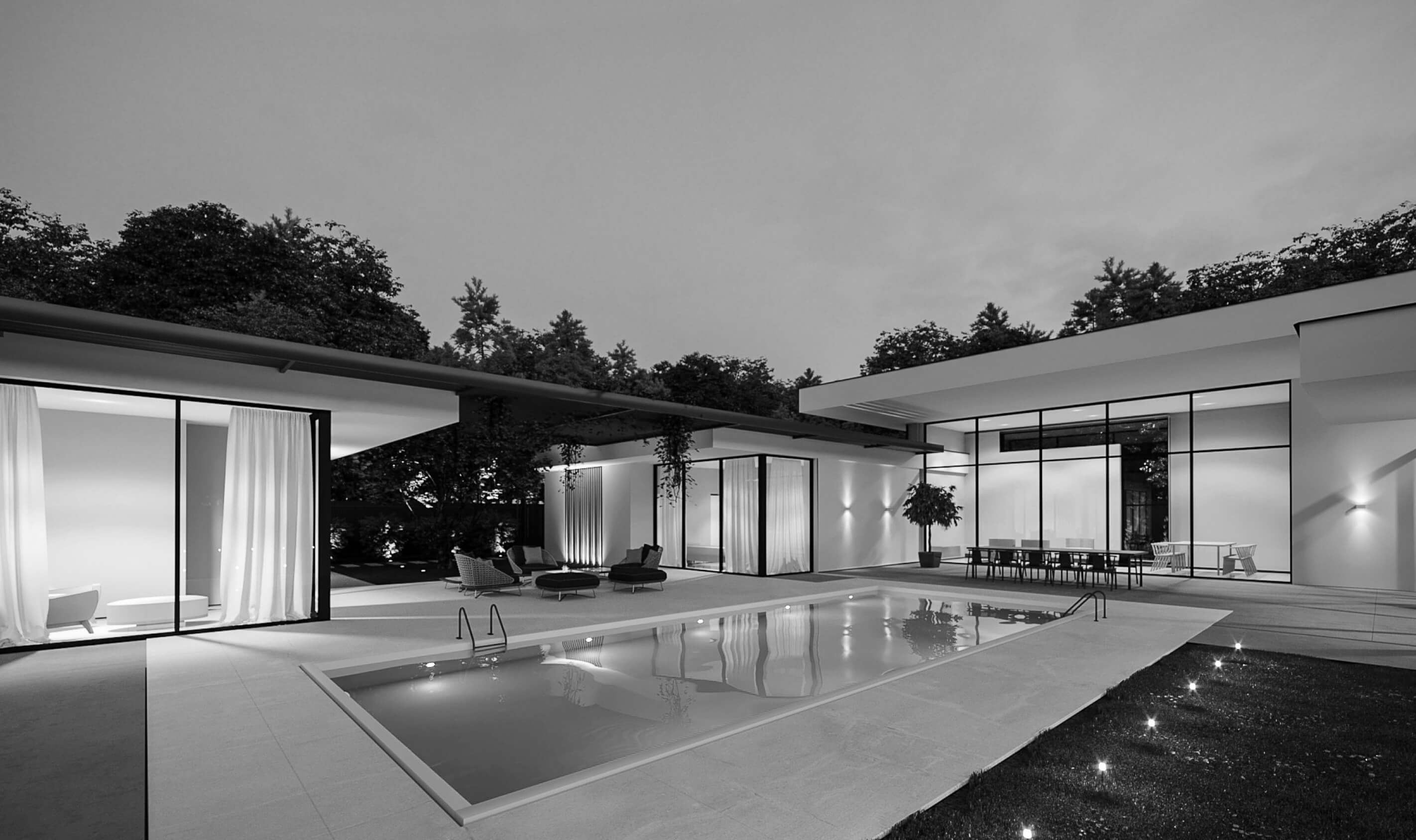Fortunately, modern trends cherish the most comfortable living conditions: we wear the most comfortable clothes to feel convenient and be productive, live in cozy homes, where appliances perform routine household tasks for us, and furniture and decor in the style of hygge create an atmosphere of pleasure and tranquility. Outside of home and rest, we work in comfortable offices. A person spends about 10 years of his life at work. It is gratifying that the evolution of the workplace has rapidly progressed to a stage where the employee has all the necessary conditions to make work comfortable and, as a result, productive.
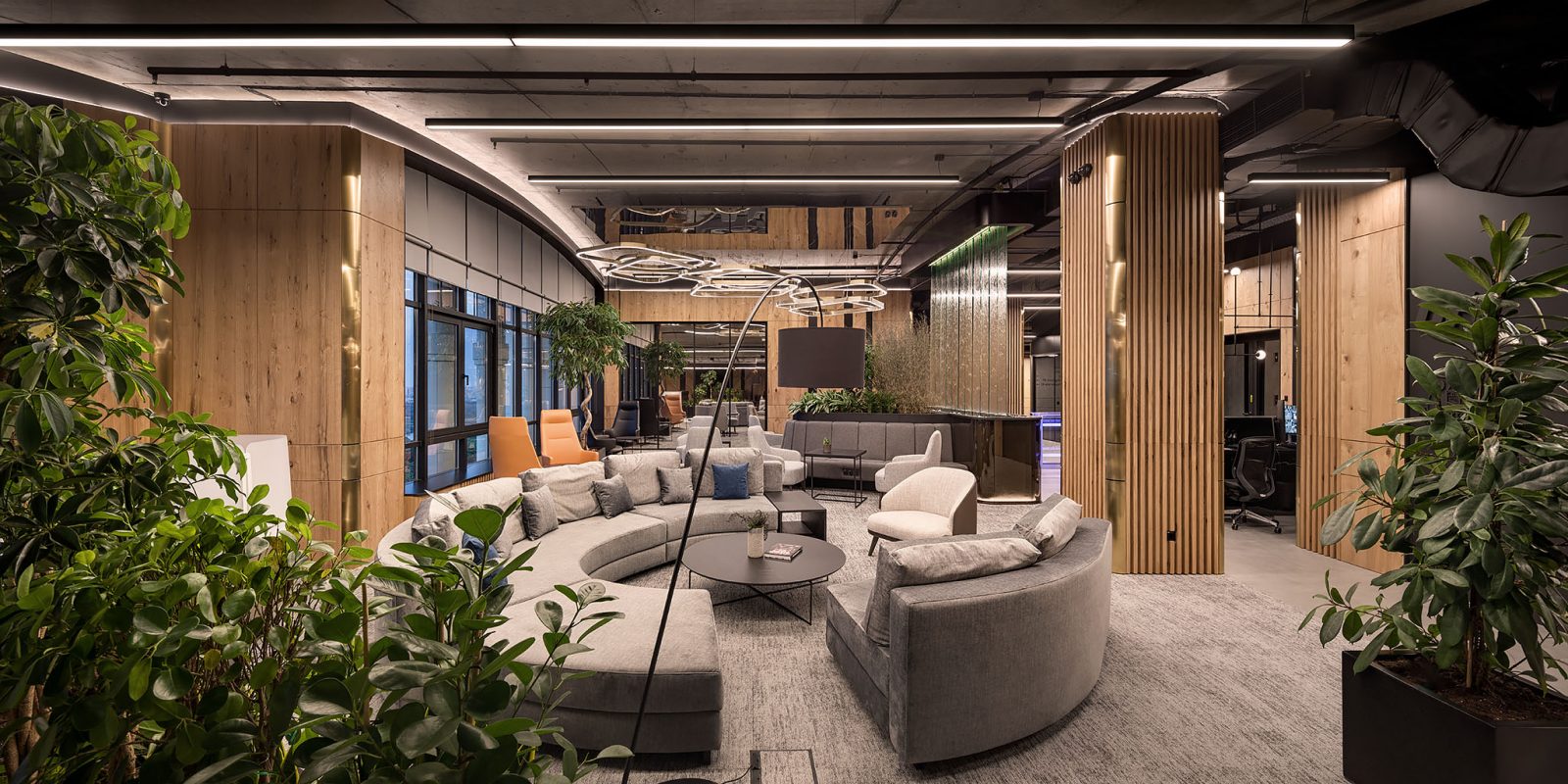
The role of landscaping, lighting and acoustics in a modern office
The key factors that affect the performance and comfort of a person in the workplace are landscaping, lighting, and acoustics. Their competent and comprehensive design forms a favorable workspace, work which is a pleasure.
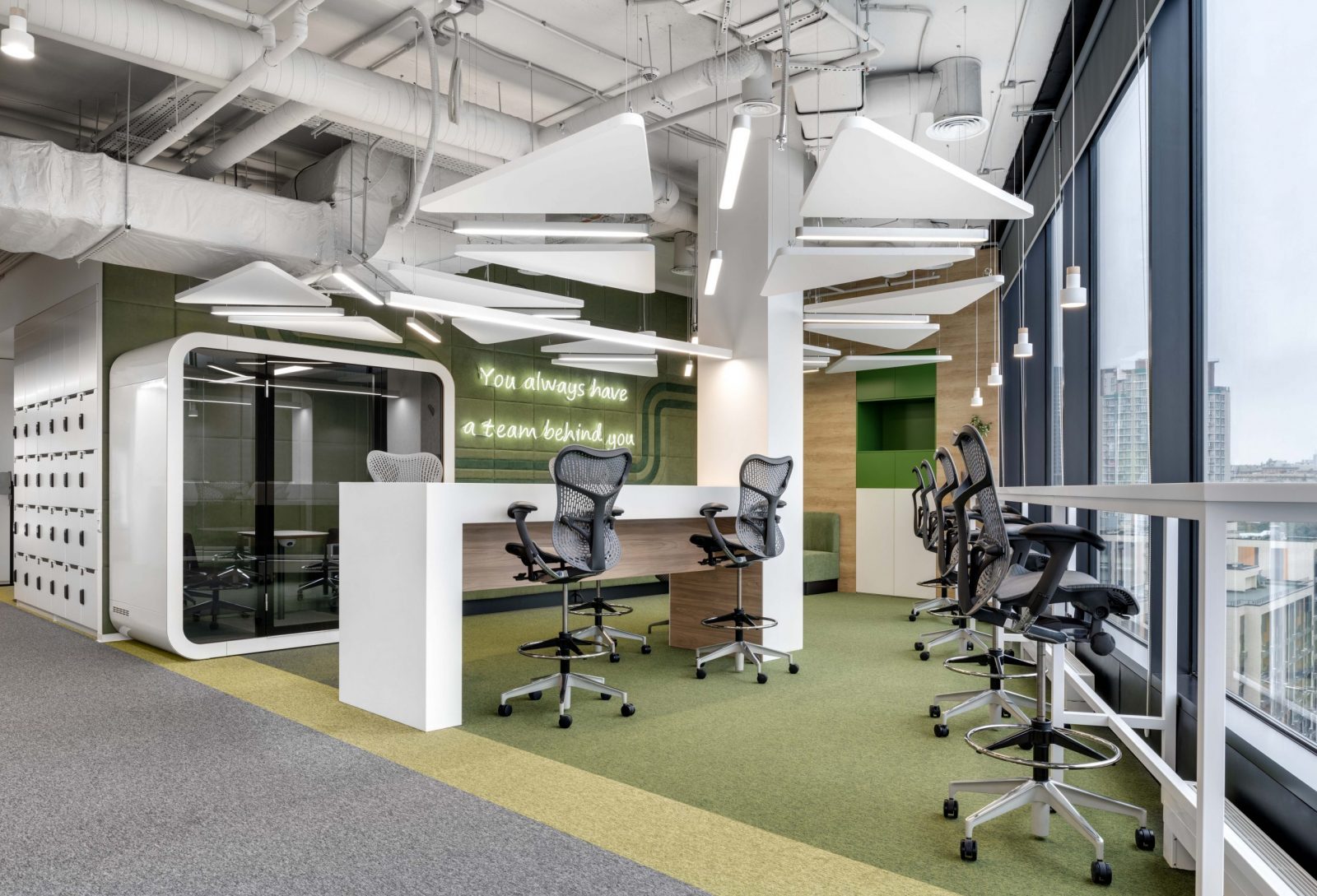
Landscaping brings special aesthetics to the interior, dilutes the pragmatic urbanism of the space, and gives naturalness and ease to the office environment. But, in addition to the decorative function, plants in a well-thought-out design satisfy a number of other key needs. Firstly, they have a positive effect on the psychosomatics of the employee, they are a resource for energy recovery, stress reduction, and connection with nature.
Secondly, planters integrated into the furniture are a convenient tools for zoning the space. Thirdly, plants together with other sound-absorbing elements form acoustic comfort in the environment.
When developing photo design, it is important to choose plants that are easy to care for, but spectacular plants can create the impression of a blooming paradise oasis. It is necessary to place the plants properly considering the lighting conditions, using artificial photo lamps if necessary.
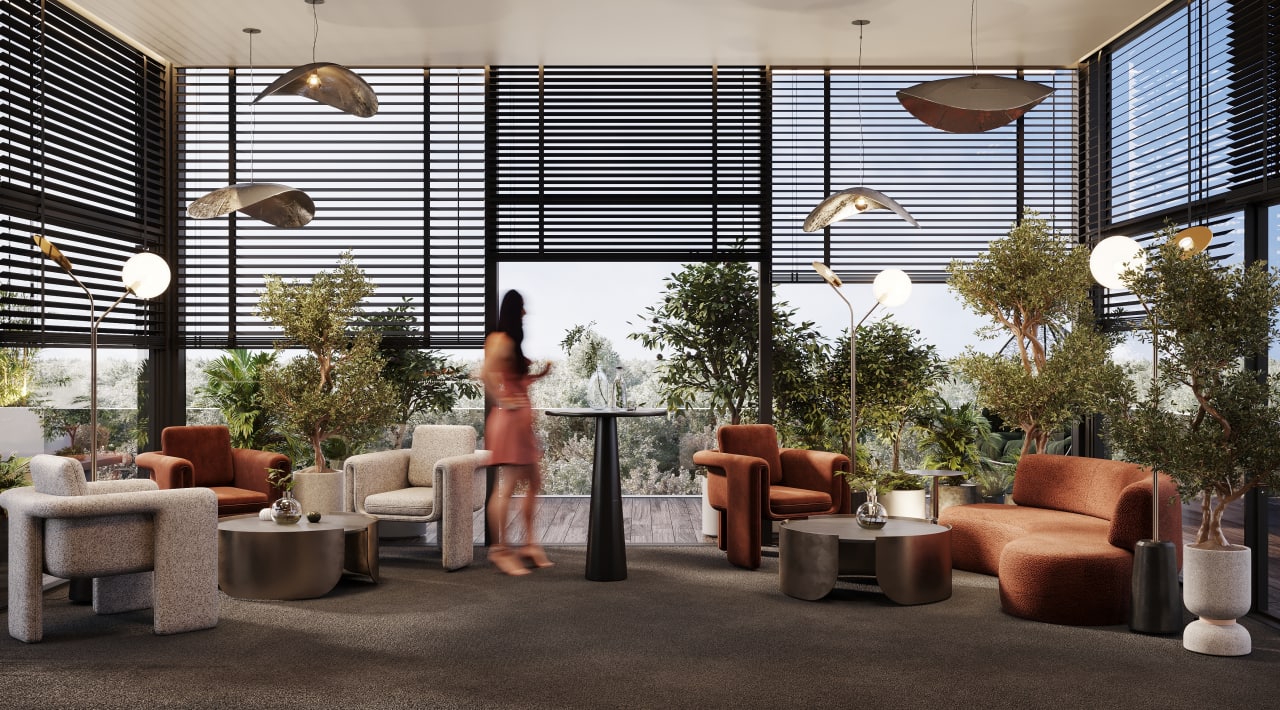
Acoustics in the office should be thought out to the smallest detail at the design stage, because noise in the working environment distracts, causes irritation and reduces concentration. The acoustic comfort of the room depends on the quality of sound insulation of its enclosing structures and the sound-absorbing characteristics of finishing materials, furniture and other content. Sound insulation is a set of measures to reduce the level of sound passing through the wall between adjacent rooms. The degree of sound absorption determines the duration of echoes, affects the intelligibility of speech and the presence of hum in the space.
Acoustic comfort is achived through a whole range of tools, including: office zoning, screen placement, proper selection of floor coverings, thoughtful placement of furniture, and other elements which is not obvious at first glance, and that only an experienced architect can calculate. Reducing extraneous noise is a manifestation of caring for employees, which also contributes to increasing the efficiency of their work. In addition to functionality, the elements of modern acoustic solutions can complement the aesthetics of the room, their design can be unique, stylish and fanciful.

Lighting in the office can be a key accent in interior design or a winning addition to it, but first and foremost it is a concern for employees and their health. Ideally, the most optimal solution in terms of caring for human vision is the presence of a significant amount of natural light, which is why large panoramic windows can often be found in offices. Artificial light systems in workspaces are ideally multi-level and controlled by means of management. Skillfully designed lighting is not only about technology, it is real creativity, a perfect play of different combinations of rays and shadows. Standard lighting is diffused, with it all surfaces are equally illuminated, the use of exclusively such a technique is no longer interesting, progressive and it does not cause any emotions. The ideal contemporary solution is a combination of diffused and directional light. Directional creates accents: bright flashes on important surfaces in contrast to the darkened fragments of secondary areas. Thus, it is possible to highlight workplaces against the background of transit zones or, to emphasize coffee tables that require increased visual attention against the background of darkened sofas in the lounge area.
Focusing on the rhythms of the human body, biodynamic lighting is introduced in offices. It is a winning alternative to the usual cold, warm and neutral lighting. Biodynamic, depending on the part of the day, changes from cold to warm, by using combinations of light sources within one luminaire. Thus, the lighting device simulates the gradation of temperature and intensity of natural light during the day, adjusting to the needs of the human body.
Actual common solutions are the installation of presence control sensors in rooms outside the work areas: transit, canteen, etc., which helps to save energy and ease of use. In conference areas, power switches are often installed to regulate the intensity of lighting, depending on the need.
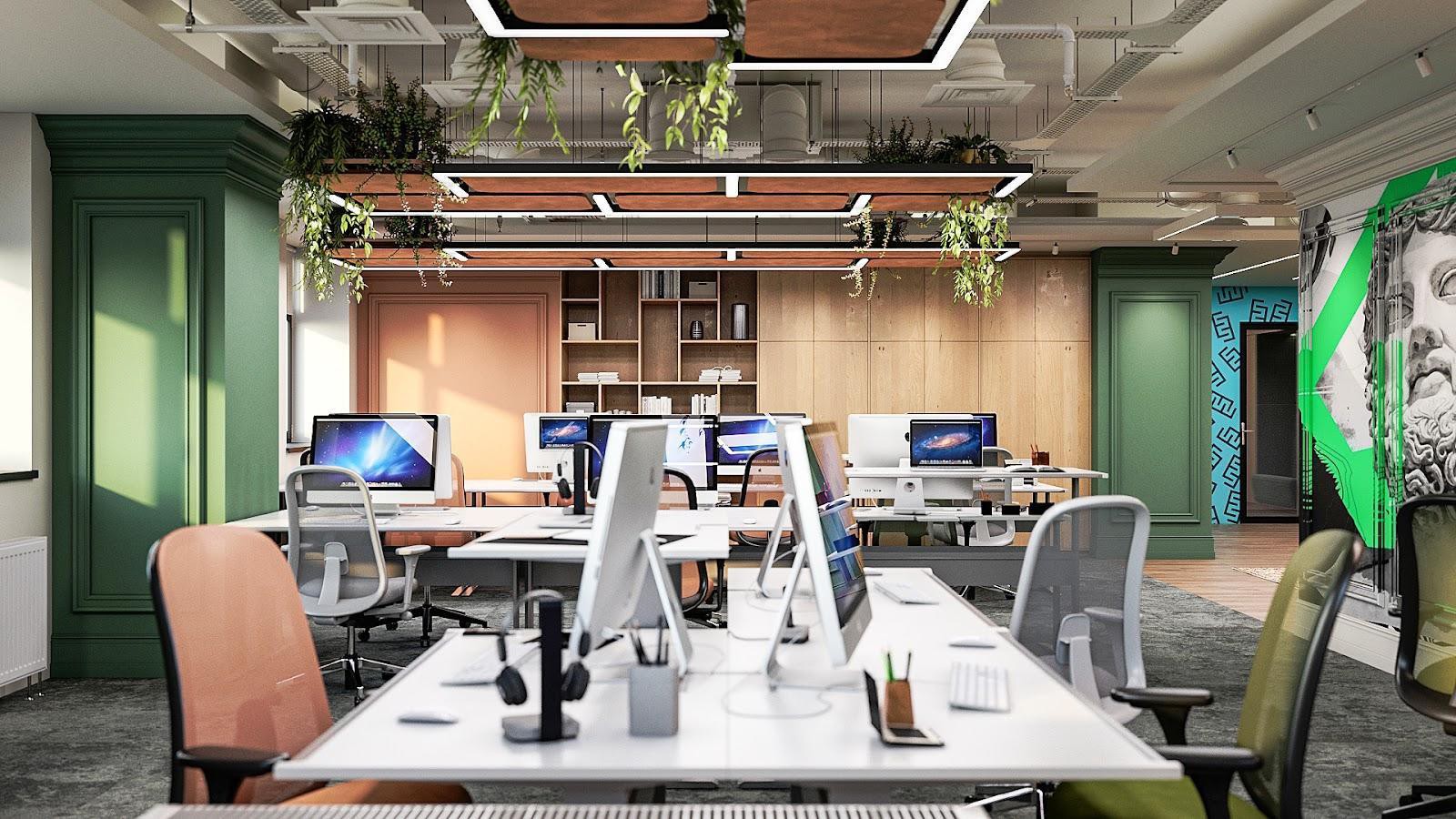
Lush green plants in beautiful pots, a quiet pleasant workplace, soft light – seemingly familiar things, but which extremely determines the comfortable course of work, the psycho-emotional state of employees, and, as a result, their productivity and even the speed of career growth. In addition, aesthetics and comfort in the workplace are not a whim, but a normal practice in the modern business world, a manifestation of respect for employees and attraction of new promising talented personnel who care about their own physical and psycho-emotional health.
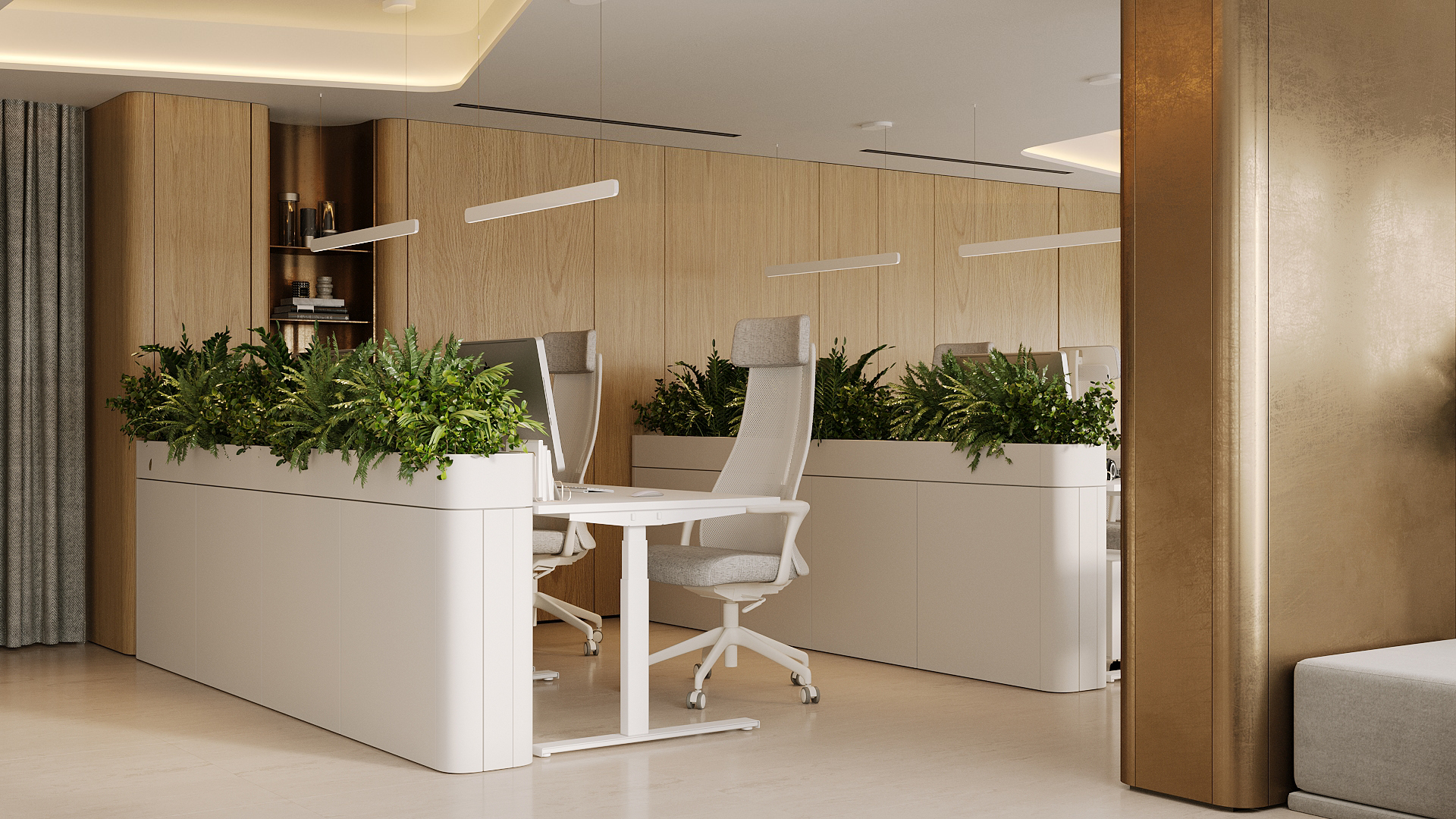
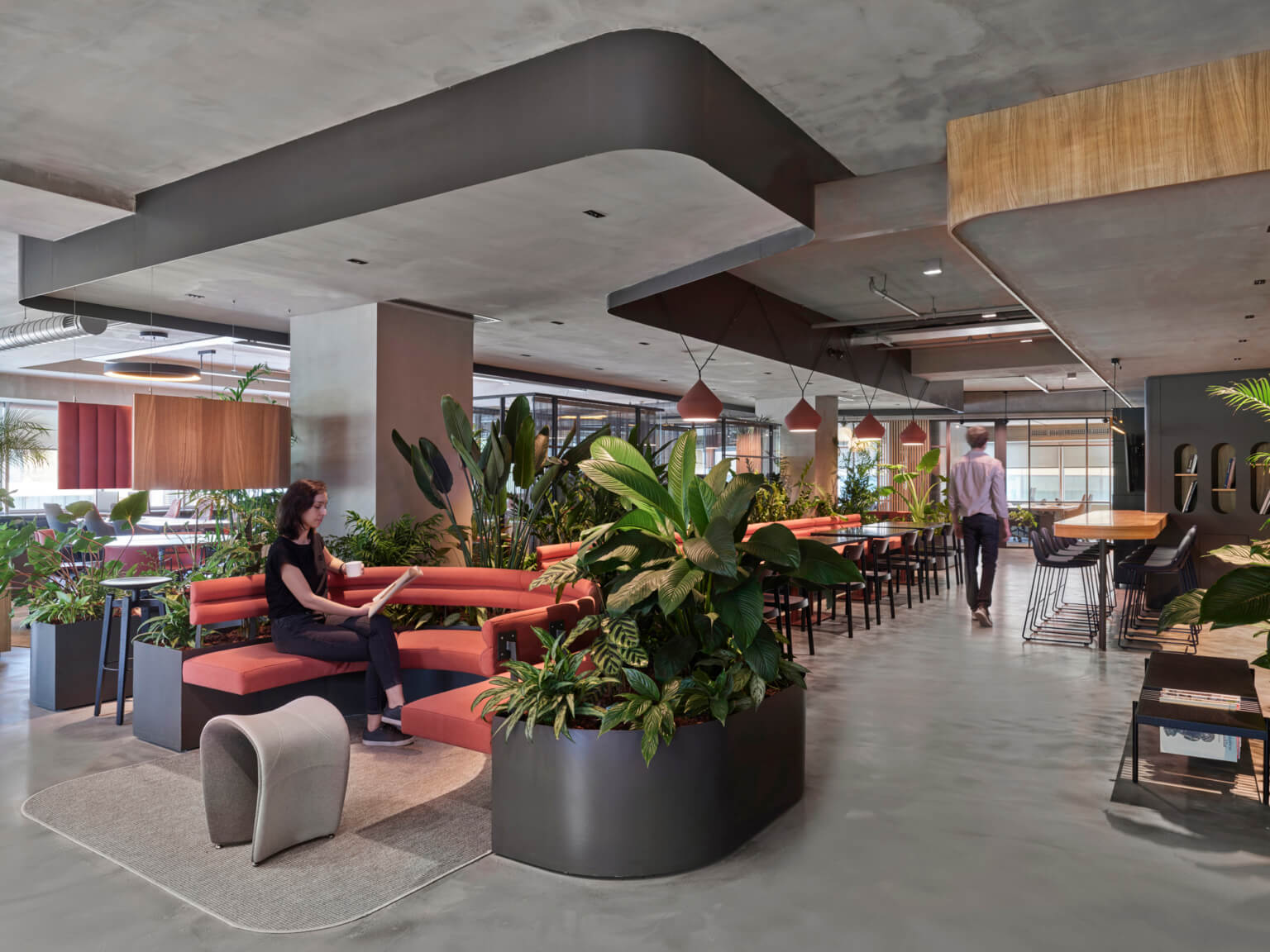

 Back
Back Back
Back




